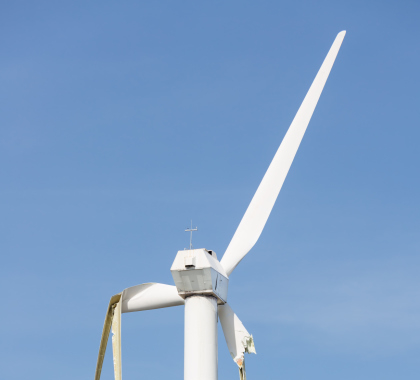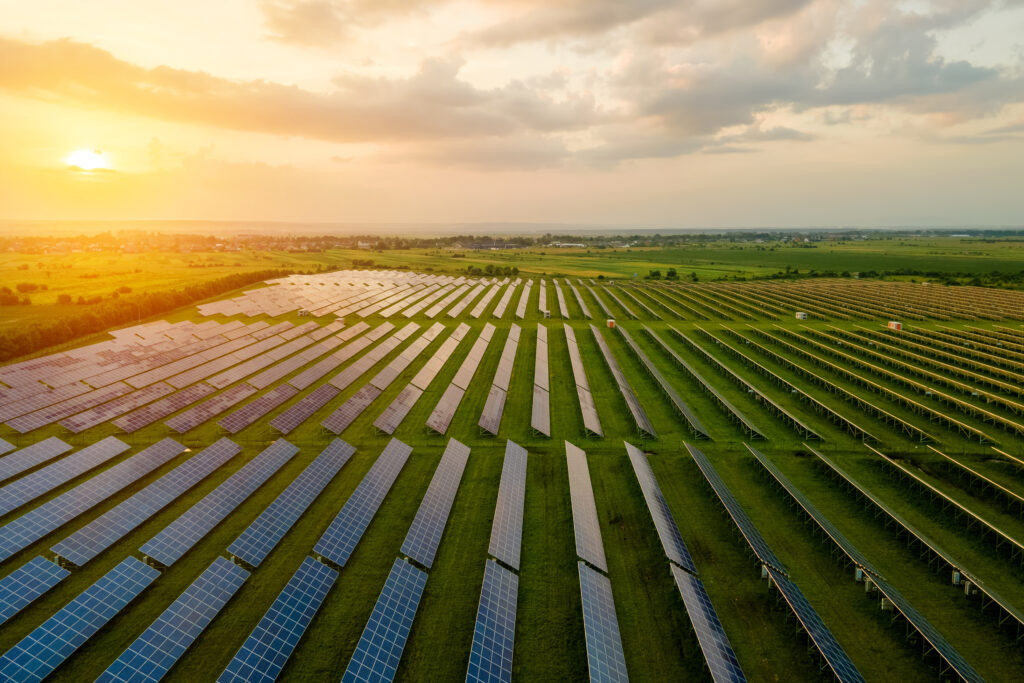A new report says impending government decisions could soon result in a sharp decline in expansion of wind power.
The news comes as the industry is expected to experience record growth in 2019 and 2020 and seven states are about to double their wind capacity in the near term,
Tariffs Could Block Wind
A report by the energy consulting firm Wood Mackenzie predicts wind capacity in the United States will experience its largest growth ever in 2019 and 2020, with installed capacity predicted to expand to 121 gigawatts (gw) from 97 gw.
Despite such already planned increases, the industry’s long-term growth prospects are cloudy, says Wood Mackenzie’s report.
U.S. wind turbine manufacturers have brought a case before the International Trade Commission (ITC) saying several countries are dumping turbines at a loss on the U.S. market, damaging domestic turbine manufacturers. In response, ITC is considering a tariff on wind turbines and parts sold by Canada, Indonesia, Korea, and Vietnam, who manufacture 84 percent of the parts used in wind turbines erected in the United States. These tariffs would be placed on top of existing tariffs on towers and other wind-related equipment from China. The tariffs would make wind power projects more expensive.
In addition, the federal production tax credit for wind is scheduled to be phased out at the end of 2019, reducing a subsidy for the industry.
If tariffs hit and the PTC is not renewed, prices will rise substantially and the buildout of wind projects could slow dramatically, says Wood Mackenzie.
Government-Corporate Cronyism
The wind industry is entirely dependent on government favoritism, says Rob Bradley Jr., Ph.D., CEO of the Institute for Energy Research.
“Cronies live and die by the government sword,” Bradley said. “Each and every wind project depends on large tax subsidies as well as preferential federal regulations to be built.
“It is ironic—and rare—the wind industry finds itself on the losing end of government policy, but tariffs on imported parts are just that,” Bradley said.
“How about eliminating all the subsidies, along with the tariffs, and let the market, not government, decide what electrical generation is best?” Bradley said.
Wind power is not ready for prime time, says Jay Lehr, Ph.D., a senior policy analyst for the International Climate Science Coalition, a longtime critic of energy subsidies.
“What could be better than tariffs on imported wind turbines to stifle an industry that only exists on the backs of the American taxpayer, often to the tune of subsidies amounting to 50 percent of their costs?” said Lehr. “Wind turbines on the free market can never offer significant energy or compete with inexpensive fossil fuel power plants, none of which can be replaced by wind power, because they all must stand ready to go to work when the wind is not blowing at the required speeds or at all.”
Forced Into Wind
Most of the industry’s support comes from state programs, says John Droz, founder of the Alliance for Wise Energy Decisions.
“Approximately 30 states have a variety of incentives promoting wind power, the most problematic being mandates requiring a certain amount of the electricity provided by utilities must be generated from wind energy,” said Droz. “Why would it ever make sense for a utility to be mandated to use an increasing percentage of any product?
“This is completely contrary to any free-market idea, yet it is how these people have rigged this whole business,” Droz said. “Every part of it is corrupt,”
Grid Costs Not Covered
Another failing of the wind industry is it doesn’t pay its full share of the costs for maintaining grid reliability, says Droz.
“Everyone needs to understand there is no such thing as wind energy by itself on the grid,” said Droz. “One hundred percent of wind energy has to be paired with another source of electric power generation, most commonly natural gas, all of the time.
“When wind goes to zero on the energy grid, which it does frequently, gas is providing 100 percent of the electricity, and when wind goes to 100 percent, gas is providing nothing, but it still has to run in order to be able to provide on-demand power at a moment’s notice when the wind falters,” Droz said. “So, part of wind energy’s cost that is not fairly accounted for is natural gas costs for providing alternative power when the wind is not blowing or to regulate the amount of energy flowing to the grid when it is.”
Reliability ‘Reckoning’ Coming
Wind power eats into the safety margin needed to ensure reliable power during periods of extremely high demand, says Droz.
“Wind power steals from the safety margin built into the grid by power regulators to prevent brownouts and blackouts when rare failures of sources and unexpected spikes in peak demand occur,” said Droz. “Most grids have a safety margin of 15 percent capacity above expected baseline demand, which means wind operators should be penalized for undermining the safety of the grid, since there have in fact been some blackouts when wind power failed and there was not sufficient backup.
“Electric power systems are able to get away with wind power’s inherent intermittency when it provides a small percentage of power to the system, but when it gets into bigger numbers like 20 percent or more, it dangerously reduces the safety margin, meaning as more wind is forced onto the power grid, we can expect increasing numbers of power failures,” Droz said. “It’s all coming to a reckoning.”
The states set to double their wind capacity in the near term are Arkansas, Maryland, Massachusetts, Nebraska, New Mexico, South Dakota, and Wyoming,
Kenneth Artz ([email protected]) writes from Dallas, Texas.





